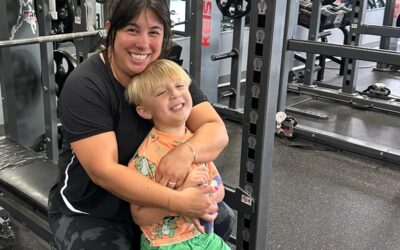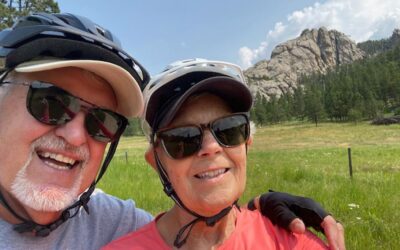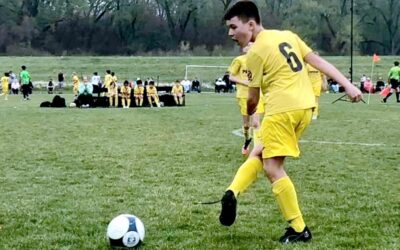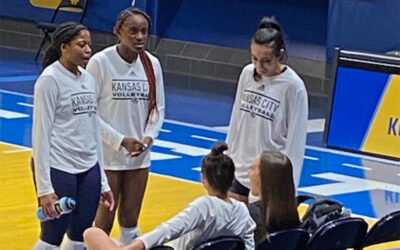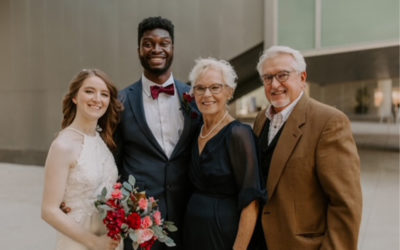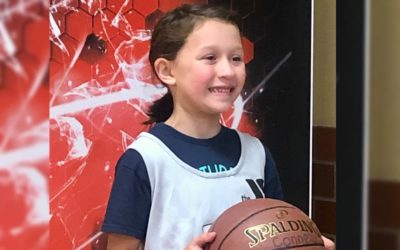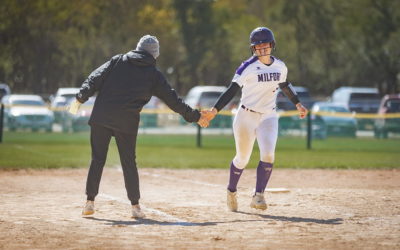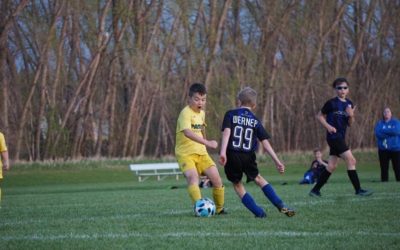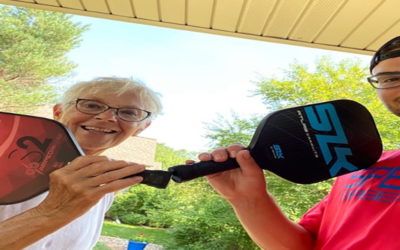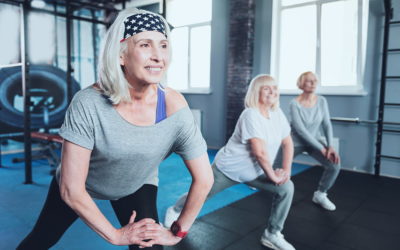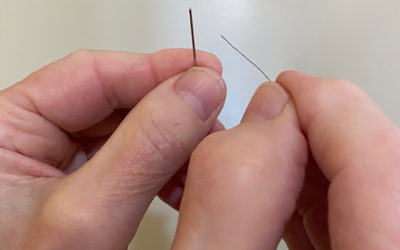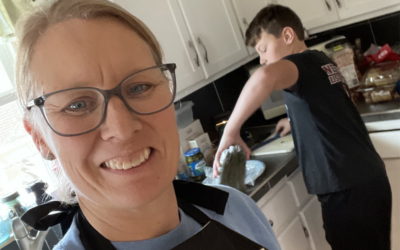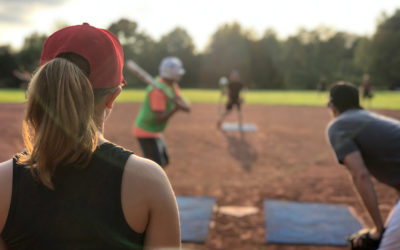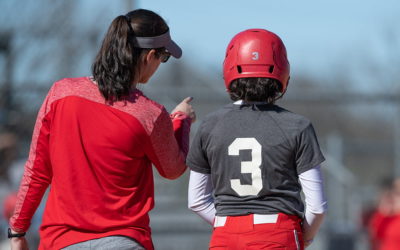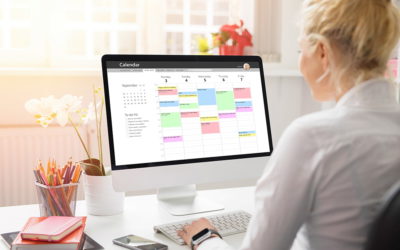Welcome to the CapitalMOM Real Life Conversation. Today, we're going to jump into a topic that has really been on both of our hearts, and it is making sure that our kids know that their worth is based on who they are and not what they do. So we'll jump into that just...
Activities & Sports
Should you put your kids into sports? How do you have hobbies as a busy parent? Is it even possible to plan outdoor activities the whole family will enjoy? We have the answers and ideas to inspire fun and active living for everyone.
Move More, Stress Less: Simple Ways to Add Movement Into Mom Life
Before I had my two littles, Max and Zoey, finding time to exercise was easy. Now? The struggle is real. Between laundry, dishes, snack requests and cleaning up endless messes, working out often takes a back seat. As moms, we naturally put our kids’ needs first – but...
Making Memories on the Golf Course
For years l've written about what my grandkids were up to, into or moving away from. It has always been about how my life has interacted with theirs—the ups, downs and 'looking forward to's. Since this summer, I have stood on the sidelines while my husband has been...
Our E-Bike Road Trip from Nebraska to Colorado
Earlier this month, John and I went on a small vacation. Here's how it went. Planning Our Trip We didn’t want to do anything too huge or expensive, so we decided to take our bikes to a couple of the state parks around the Midwest and explore. I don’t believe we’ve had...
Granddaughter Runs Away With It
It was December of 2023 when I first heard my granddaughter had signed up to run the 2024 half marathon in Lincoln. I was thrilled to hear her news. I knew she liked to run a bit, but never imagined she had set a goal to run the half marathon. Supporting Her Training...
8 Tips to Avoid Injury: Insights from Sports Medicine Trainers
Whether you’re a weekend warrior, a recreational sports enthusiast or professional athlete, we can all use tips to avoid injury and stay healthy. We asked our athletic trainers to share some of their best tips.1. Listen to Your Body & Address Pain or Discomfort...
What I Learned on My Grandson’s Recent Ski Trip
As our grandkids grow older, our ski trips are changing. Our Memories on the Slopes Years ago, when our kids were in elementary and junior high (yes, back in the old days when it was called junior high), we would take our daughters skiing in Colorado during winter...
Should Parents Actually Spend So Much on Youth Sports?
My 12-year-old, Cohen, is supposed to be practicing juggling his soccer ball. Instead, he’s playing catch with the dog. “Juggle,” I yell. “I’m not paying all this money for soccer if you’re not going to practice.” A Love, Hate Relationship with Practice Don’t get me...
My Coach of the Year
My granddaughter played volleyball at Lincoln Southeast High School and University of Missouri - Kansas City (UMKC), where she received her bachelor's degree. My husband and I attended her games as often as we could and loved every minute of it. As her grandparents,...
Sharing Advice with My Softball-Loving Daughters
I wrote this four years ago and wanted to revisit it because my heart is overflowing with all of these lessons for my daughters as we are in the thick of the softball season. From Players to Coaches One of you is a senior who is wearing her softball jersey for the...
Exercise Is the Best Way to Manage Arthritis Pain
Your knees, hips or back are stiff and sore and sometimes hurt with certain movements, so why would you want to strength train or do other types of exercise? Simple: Exercise is crucial for people with arthritis of all kinds because it: Increases strength and range of...
Revisiting Rowe Sanctuary in the Sandhills
Last week, my husband John and I visited Rowe Sanctuary to watch the cranes. We knew it was early in the season, but John had a meeting as chair for the Spring Creek Prairie Stewardship Board. It was great timing for all of the events. Our Most Memorable Moments...
Stepping In to Make a Wedding Perfect
When I was principal at Lincoln Northstar High School, I was blessed to have so many refugee and immigrant students. I loved hearing their stories and helping their families navigate the United States. But one student—a 15-year-old born in Togo, Africa—became my...
What to Do When Your Kid Wants to Quit Sports
My daughter, Collyns, is almost nine years old. All her life, she has hated sports. She tried gymnastics but didn’t enjoy it. She loves to swim but not in the winter. She doesn't have a competitive bone in her body. She's my “free spirit,” the complete opposite of my...
The Art of Digging
Our granddaughter has been playing volleyball since she was five years old, and I hate to say it’s coming to an end. On the Leaderboard When she was in elementary school, she was short but made up for her lack of height with her hustle. It’s almost as if she was born...
Beyond the Softball Diamond: Life’s Best Pep Talks
Most of you know I am a high school softball coach. I also get the privilege of coaching my daughter, our starting shortstop. There are many opportunities for me to not only teach skills and techniques about the sport but also about life beyond the softball diamond. I...
Remaining Positive During an Injury
We all hate to see it. The play is over, and players in the pile get up, but one player doesn't. Sometimes you see the injury as it happens. Sometimes it is a mystery. Either way, nothing quiets a crowd like a sports injury. It does not matter whether it occurs in...
Trying to Get Better at Pickleball
I’ve blogged about my Pickleball experiences before but I continue to play and it’s on my mind. As a senior, I know my ability to perform any athletic activity is fleeting at best. But I do continue to enjoy this sport, probably the socialization as much as the...
Growing Old Gracefully
The other day my oldest granddaughter complimented me on my flexibility. I told her I try to work on my good health and wellness each and every day. She said I was a good role model and hoped she could grow old gracefully and follow in my footsteps. I told her by the...
Finding Balance in a Busy Schedule
Do you ever just want to quit? Your heart is overwhelmed, the busyness is all-consuming. There are definitely seasons like this and for some, it happens more than others. Some of us can stop and look at the flowers, for others we stop, pick the flowers, run home, cut...
Seamstress Not for Hire
There was a time when I could sew. There was a time when my sewing machine worked and not in need of repairs. There was a time when I had time…. No wait, I’m retired and have all the time in the world. I remember making our daughters clothes from actual patterns. I...
Finding Joy in Cooking
I find joy in many aspects of my life. However, at the beginning of December, I was DONE. I was done finding joy. The joy in cooking, that is. I LOATHE cooking. Who in the world should expect a healthy meal for lunch, supper and breakfast, anyways? I hate recipes that...
Lessons Learned from Injury
Two weeks ago our middle daughter broke her hand during a high school softball game. The sport she absolutely loves. That night I instantly knew something was wrong when she pulled herself from the game and said, “Mom, I cannot get my glove on.” Going from Manager to...
Learning How to Play Pickleball
As I age, I have tried to keep active. Just keep moving. I play golf, go to the gym and play pickleball. The grandkids appreciate my efforts and ask often what I’m doing to keep active. I've told them story after story of my sporting past, which is non-existent. When...
Enjoying Summer Days with My Kids
Netflix binges. Golf tournaments. Softball games. Cleaning closets. Reading. Extra screen time. Falling down the Twitter rabbit hole. Way too many frozen pizzas. Late nights on the deck. As I try to blog this month I am quickly halted by writer’s block over and over....
7 Ways to Strengthen Your Bones & Lead an Active Life
Our bones are amazing structures that keep us upright, and along with muscles, ligaments and tendons, they allow us to move and participate in activities that make life worthwhile! Bones are made of minerals—calcium and phosphate—proteins, collagen and growth factors...
Starting a Business During the Pandemic
This past year and a half has been interesting. Vaccinations have changed life dramatically. Being able to hug my grandkids with more gusto, probably much to their chagrin, since everyone has received their shots. Seeing book club friends for the first time in years...
Keeping the Door Open to New Opportunities
There are days where doors open for opportunities, and there are days where the doors are closed. Sometimes we slam the doors shut in hopes they never open again. And then there are those days where we shut the door only to walk away not noticing the door slightly...
Refocusing When Life Gets Busy
One year ago this month, our world changed. My profession, like so many others, was sent home abruptly as different sectors in the world started shutting down. Everything about that time brought fear, uncertainty and disappointment. Some of these feelings still ring...
Encouraging Your Child to Pursue Their Passions
Being a parent is amazing. It's hard. It's challenging. It's tiring. It's scary. It's rewarding. The list could actually never end. For me, one of the most rewarding moments as a parent is watching our kids pursue their passions. Maybe it's the career and technical...
Use Our Symptom Checker
Whether it’s a rash, your child’s ear pain or your aching back, our symptom checker can help determine what to do. Just answer a few questions about your symptoms and receive recommendations for care.
Find a Doctor
Find the right provider for you. Search by specialty, view provider videos and even schedule an appointment online. Life’s busy, we make finding a provider fast and easy to fit your schedule.
Stay Informed for Your Health
You and your family are unique. At Bryan Health, we have a variety of classes, events, podcasts and more for all stages of life.
To stay in the know, subscribe to our monthly For Your Health email!
Tune in to…Bryan Health Podcasts
Our 10-minute podcasts provide practical, useful advice for a lifetime of good health.
And they’re easy to listen to while you’re on the go, at work or at home. Listen to or download a free podcast today!
Register for the Bryan Baby App
Access pregnancy, childbirth and newborn care resources anytime, anywhere.
The Bryan Baby App includes the tools and support you need at every stage of your pregnancy journey and beyond.



